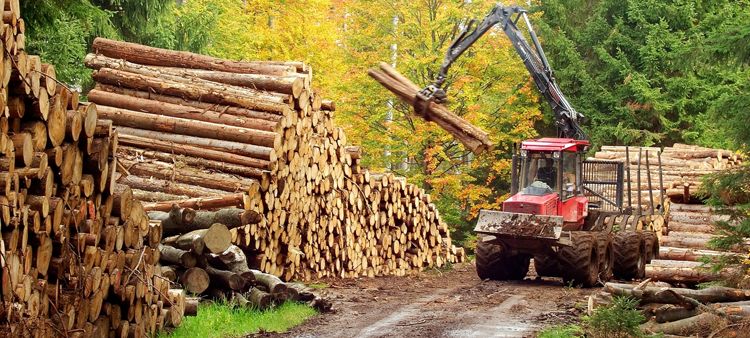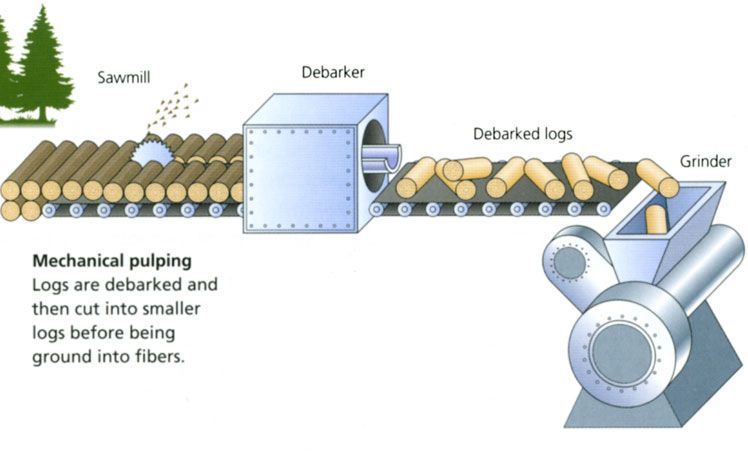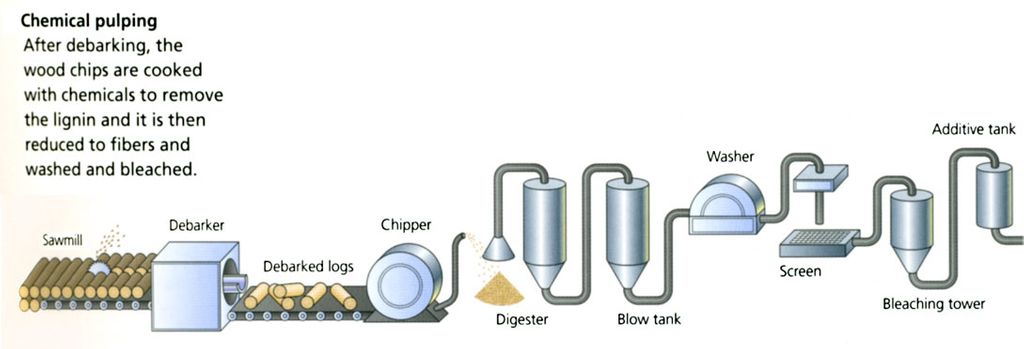Woodpulp To Paper : Sacrifice Of A Tree
Apr 19, 2019 • 185 views
It is hard to imagine how something so tall andstrong could be turned into something as thin and weak as a sheet of paper. Papermaking is one of the oldest techniques known to mankind, but today it is approached with a commitment to sustainability and environmental protection and renewal.
The number of trees and other vegetation cut down in order to make paper is enormous. Nearly 4 billion trees worldwide are cut down each year for paper, approximately 80,000 to 160,000 trees are cut down daily, representing about 35 percent of all harvested trees.
Paper companies insist that they plant as many new trees as they cut down. But, a young tree cannot replace the value of an older tree. The chemicals used in paper manufacture, including dyes, inks, bleach, and sizing, can also be harmful to the environment when they are released into water supplies and nearby land after use.

Journey of making paper -
MAKING PULP
Paper is made from the raw material called Pulp. Cotton and other fibers are also used to create paper. The most paper today (more than 90%) is made from wood pulp, largely from softwood coniferous trees such as spruce or pine.
Mechanical wood pulp:grinding logs under a stream of water. A cheaper way that produces low-quality paper such as newsprint.

Chemical wood pulp:chemicals cook and separate wood fibers making it higher quality.

Some pulp consists of vegetable (cellulose) fibers with various additives. High-quality papers (some still being made by hand) utilized cotton, linen, or hemp fibers, all of which were high strength yielding and very durable materials. Straw, bamboo, and esparto grass are also used in making paper. Quality book papers were usually made from esparto, but this is replaced by the bulky hardwood, eucalyptus.
BEATING
The pulp is next put through a pounding and squeezing process called, beating. Inside a large tub, the pulp is subjected to the effect of machine beaters. At this point, various filler materials and additives can be added such as chalks, clays, or chemicals such as titanium oxide which will influence the opacity and other qualities of the final product. Sizings are also added at this point. Sizing affects the way the paper will react with various inks. Without any sizing at all, a paper will be too absorbent for most uses except as a desk blotter.
PULP TO PAPER
In order to finally turn the pulp into paper, the pulp is fed or pumped into giant, automated machines. One common type is called the Fourdrinier machine, which was invented in England in 1807. The pulp is fed into in it on a moving belt of fine mesh screening. The pulp is squeezed through a series of rollers, while suction devices below the belt drain off water. If the paper is to receive a watermark, a device called dandy moves across the sheet of pulp and presses a design into it. The paper then moves onto the press section of the machine, where it is pressed between rollers of wool felt. The paper then passes over a series of steam-heated cylinders to remove the remaining water.
FINISHING
Finally, the dried paper is wound onto large reels, where it is further processed depending on its ultimate use. Paper is smoothed and compacted further by passing through metal rollers called calendars.Then the paper is cut to the desired size.
Concerning environment protection, it is necessary that for one older tree, ten plants should be planted and the older tree should be cut down at least after three years when planting new plants. Chemicals and dyes should be discharged in water bodies only after treated properly. We, only are responsible for environmental degradation and it is true that we can not stop it. But we hold the power to change it.
